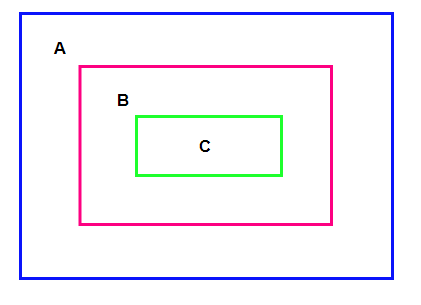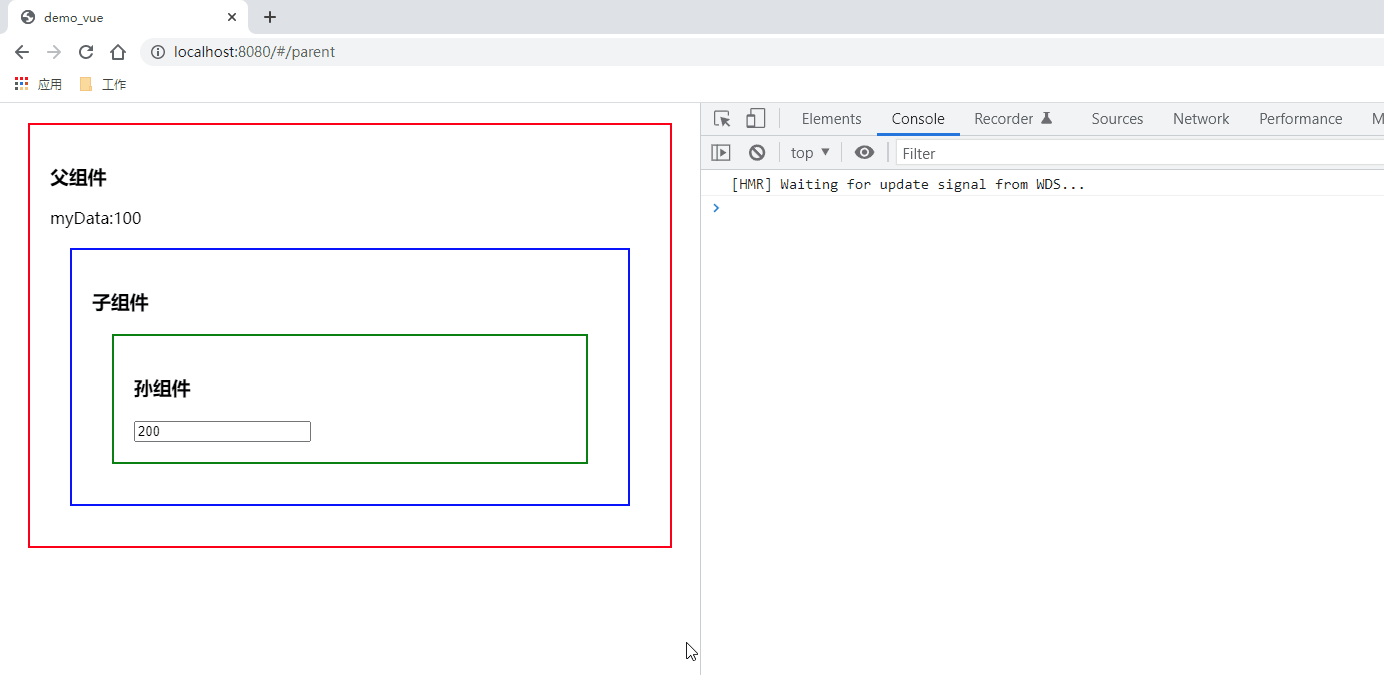Vue--$attrs, $listeners--使用/教程/实例
原文网址:Vue--$attrs, $listeners--使用/教程/实例_IT利刃出鞘的博客-CSDN博客
简介
说明
本文用示例介绍Vue的$attrs和$listeners的用法。
使用场景
$attrs:用于父组件隔代向孙组件传值。
$listeners:用于孙组件隔代向父组件传值。
当然,这两个也可以同时使用,达到父组件和孙组件双向传值的目的。
官网
$attrs 和 $listeners介绍
Vue2.4 中,引入了attrs 和 listeners , 新增了 inheritAttrs 选项。
$attrs:包含了父作用域中没有被 prop 接收的所有属性(不包含class 和 style 属性)。可以通过 v-bind="$attrs" 直接将这些属性传入内部组件。
$listeners:包含所有父组件中的 v-on 事件监听器 (不包含 .native 修饰器的) ,可以通过 v-on="$listeners" 传入内部组件。
inheritAttrs为true:继承除props之外的所有属性;inheritAttrs为false:只继承class属性
$attrs
简介

现有3个嵌套组件,A->B,B->C。
A组件传值给C组件,有多少种解决方案?
Vuex我们使用vuex来进行数据管理,依赖于vuex我们可以一次改变,任何一个组件中都能获取。但是如果多个组件共享状态比较少,使用vuex过于麻烦和难以维护。element-ui中大量采用此方法。
自定义vue bus事件总线,原理类似vuex,使用特别简单。bus适合碰到组件跨级兄弟组件等无明显依赖关系的消息传递,原生app开发中经常用到,但是缺点是bus破坏了代码的链式调用,大量的滥用将导致逻辑的分散,出现问题后很难定位,降低了代码可读性。
使用B来做中转,A传递给B,B再给C**,**这是最容易想到的方案,但是如果嵌套的组件过多,需要传递的事件和属性较多,会导致代码繁琐,代码维护困难。
示例:父组件隔代传值给孙组件
代码
Parent.vue(父组件(顶层组件))
<template>
<div class="outer">
<h3>父组件</h3>
名字:<input v-model="name">
年龄:<input v-model.number="age" type="number">
电话:<input v-model="phoneNumber">
<child :name="name" :age="age" :phoneNumber="phoneNumber"></child>
</div>
</template>
<script>
import Child from "./Child";
export default {
name: 'Parent',
components: {Child},
data() {
return {
name: 'Tony',
age: 20,
phoneNumber: '1234567890'
}
}
}
</script>
<style scoped>
.outer {
margin: 20px;
border: 2px solid red;
padding: 20px;
}
</style>
Child.vue(子组件(中间组件))
子组件作为父组件和孙组件的传递中介,在儿子组件中给孙子组件添加v-bind="$attrs",这样孙子组件才能接收到数据。
<template>
<div class="outer">
<h3>子组件</h3>
<div>获得顶层组件的name:{{name}}</div>
<grand-child v-bind="$attrs"></grand-child>
</div>
</template>
<script>
import GrandChild from "./GrandChild";
export default {
components: {GrandChild},
props: ['name'],
created() {
console.log('Child=> $attrs: ' + JSON.stringify(this.$attrs));
}
}
</script>
<style scoped>
.outer {
margin: 20px;
border: 2px solid blue;
padding: 20px;
}
</style>
GrandChild.vue(孙组件(最底层组件))
孙组件使用props接收从父组件传递过来的数据。(也可以在created时接收数据)
<template>
<div class="outer">
<h3>孙组件</h3>
<div>顶层组件的name:{{name}}</div>
<div>顶层组件的age:{{age}}</div>
<div>顶层组件的phoneNumber:{{phoneNumber}}</div>
</div>
</template>
<script>
export default {
name: "GrandChild",
props: {
name: {
type: String
},
age: {
type: Number
},
phoneNumber: {
type: String
}
},
created() {
// this.parentAge = this.age; //也可以这样取值
console.log('GrandChild=> $attrs: ' + JSON.stringify(this.$attrs));
}
}
</script>
<style scoped>
.outer {
margin: 20px;
border: 2px solid green;
padding: 20px;
}
</style>
路由(store/index.js)
import Vue from 'vue' import Router from 'vue-router' import Parent from "../components/Parent"; Vue.use(Router) export default new Router({ routes: [ { path: '/parent', name: 'Parent', component: Parent, } ], })
测试
测试1:访问
访问:http://localhost:8080/#/parent

一开始,父组件和孙组件的数据不一致,都是初始数据。
测试2:孙组件动态传值给父组件

实际应用
应用1:封装组件
element-ui开发的后台项目中,大量使用到了el-table和el-pagination做分页数据展示,所以我封装一个自定义组件page-table:
<template>
<div class="page-table">
<div class="wrapper">
<el-table
ref="elTable"
:data="tableData">
<slot/>
</el-table>
<div style="margin-top: 16px;overflow: hidden">
<el-pagination
class="page"
:current-page="currentPage"
layout="total, prev, pager, next, jumper"
:total="total"
@current-change="handleCurrentChange"/>
</div>
</div>
</div>
</template>
这样做的副作用是:引用page-table的地方无法使用el-table和属性和事件。
解决方案:在el-table使用的地方加上v-on="$listeners"和v-bind="$attrs",这样使用page-table的地方可使用所有el-table的属性和事件。
<template>
<div class="page-table">
<div class="wrapper">
<el-table
ref="elTable"
v-bind="$attrs"
v-on="$listeners"
:data="tableData">
<slot/>
</el-table>
<div style="margin-top: 16px;overflow: hidden">
<el-pagination
class="page"
:current-page="currentPage"
layout="total, prev, pager, next, jumper"
:total="total"
@current-change="handleCurrentChange"/>
</div>
</div>
</div>
</template>
应用2:兄弟组件传值到最外层
有时候会碰到多个兄弟组件传递参数到最外层,如有B组件包含C1和C2,都需要和A交互,定义2个props使用v-bind即可。
<template>
<div class="page-table">
<div class="wrapper">
<el-table
ref="elTable"
v-bind="table1Props"
:data="tableData">
<slot/>
</el-table>
<el-table
ref="elTable"
v-bind="table2Props"
:data="tableData">
<slot/>
</el-table>
<div style="margin-top: 16px;overflow: hidden">
<el-pagination
class="page"
:current-page="currentPage"
layout="total, prev, pager, next, jumper"
:total="total"
@current-change="handleCurrentChange"/>
</div>
</div>
</div>
</template>
<script>
export default {
props: {
table1Props: Object,
table2Props: Object,
}
</script>




